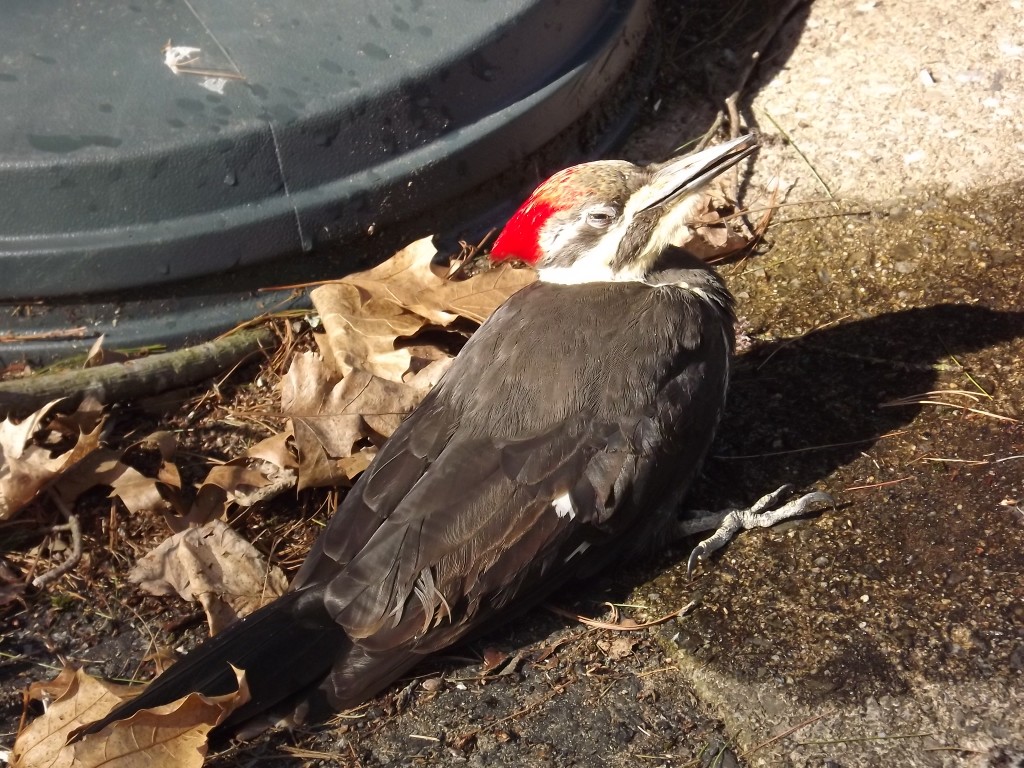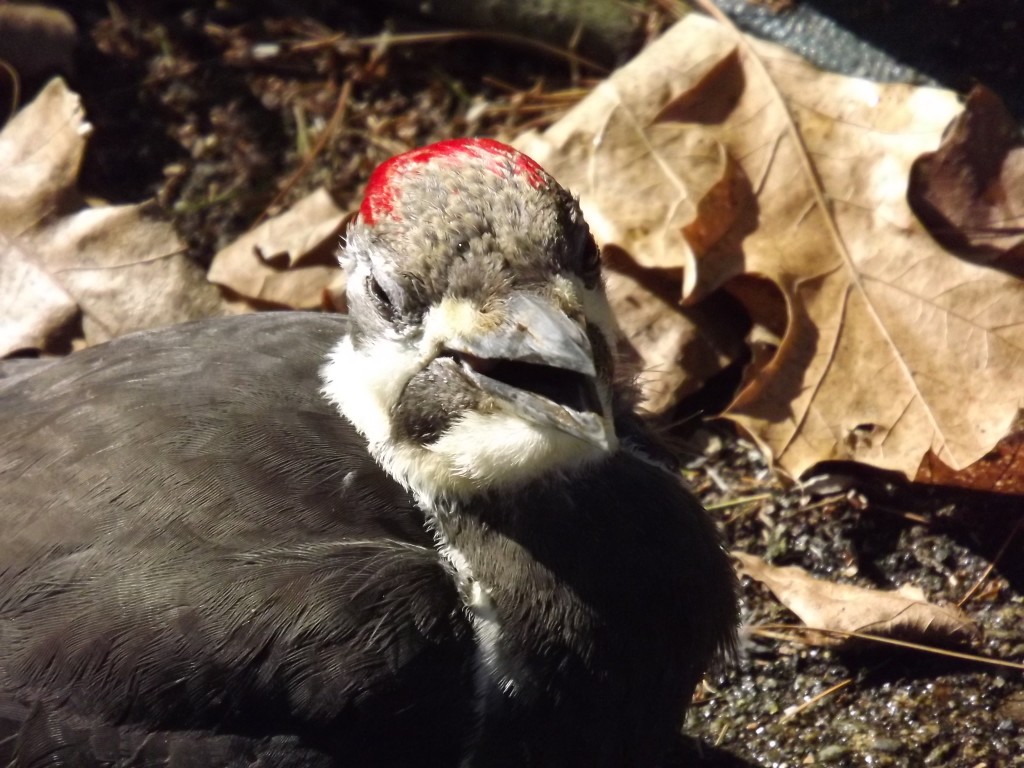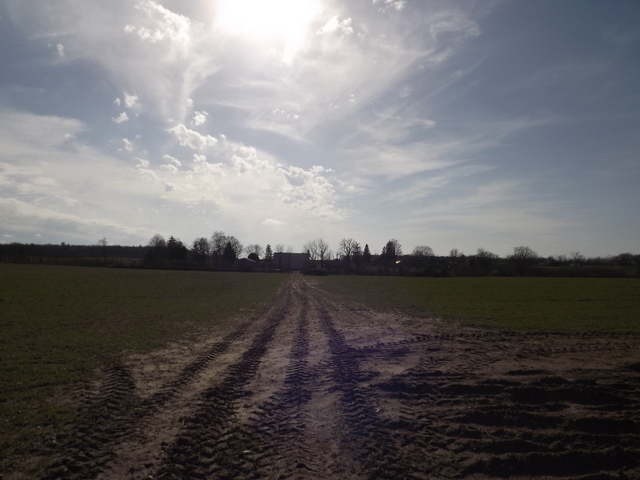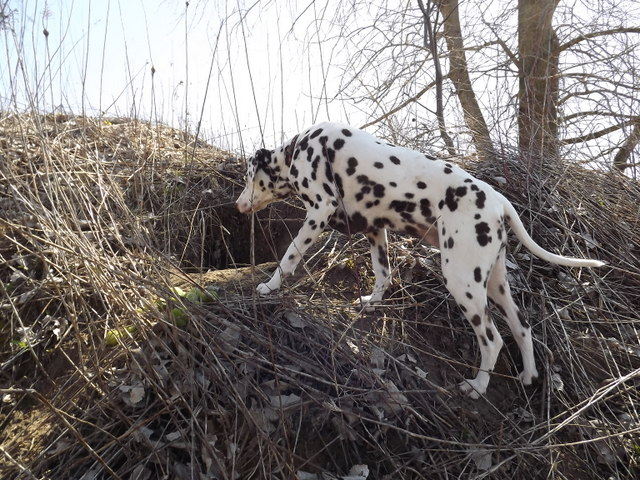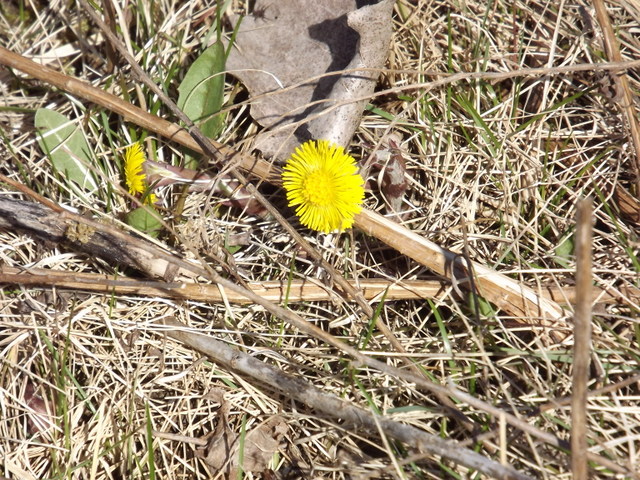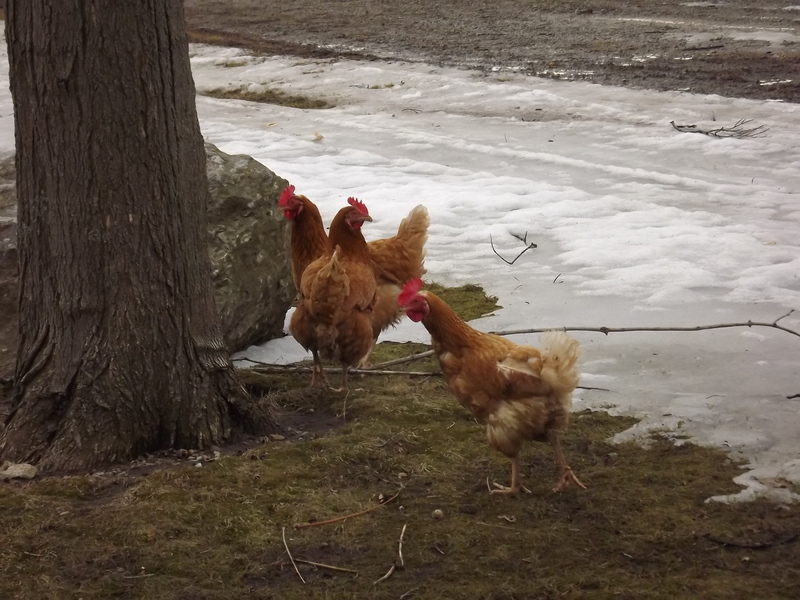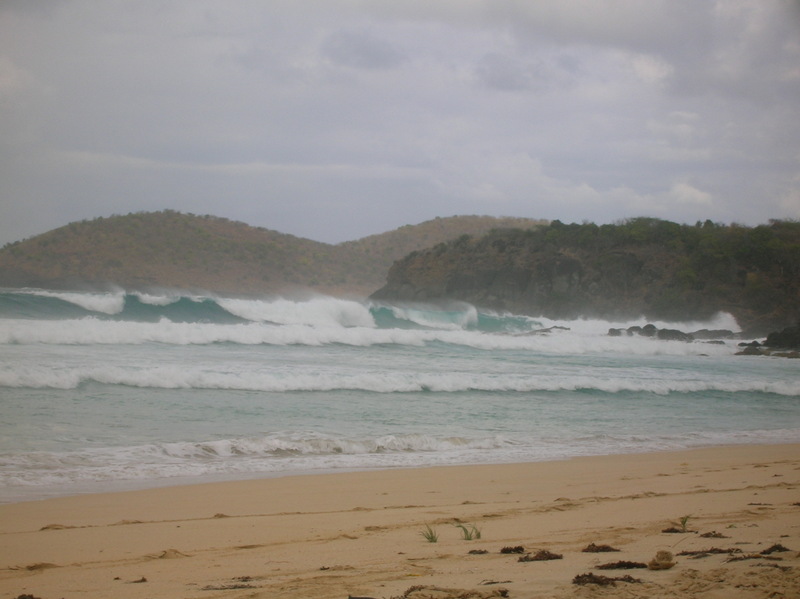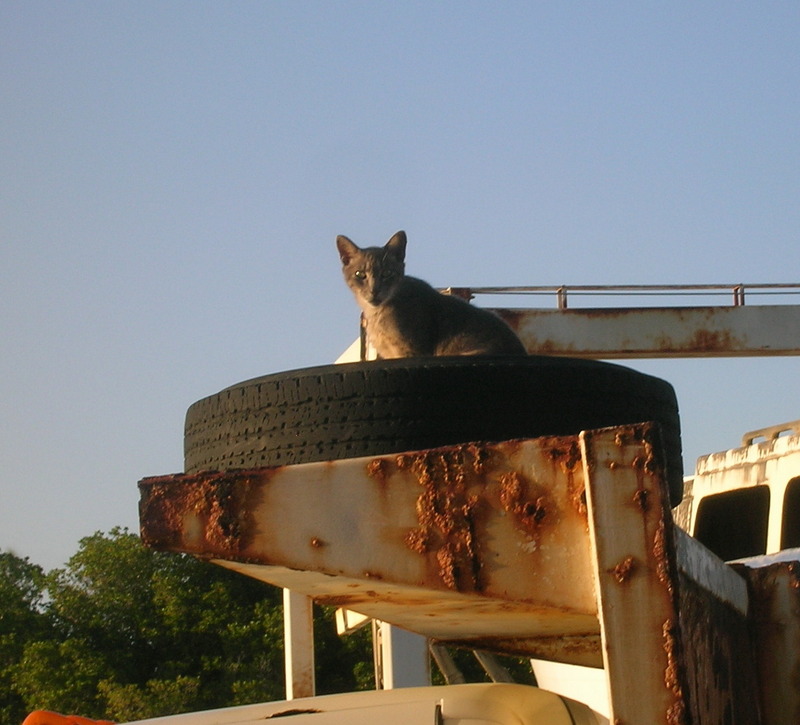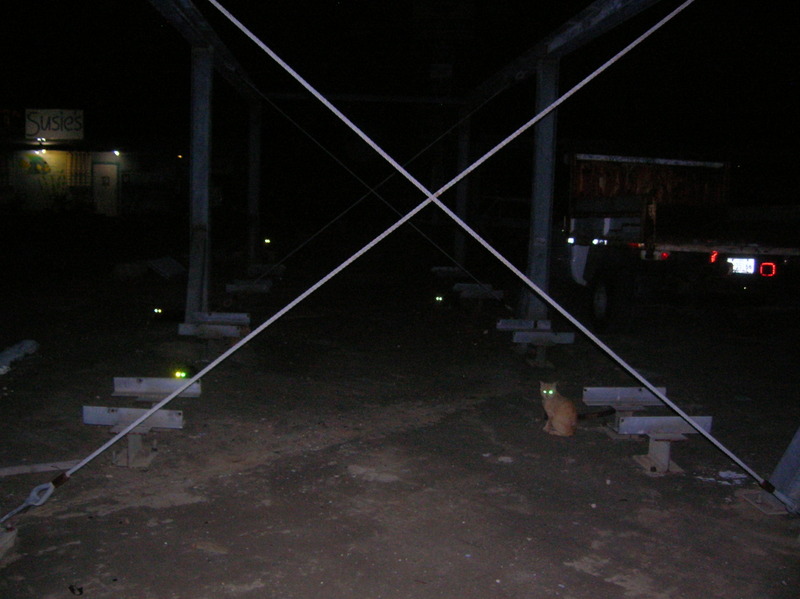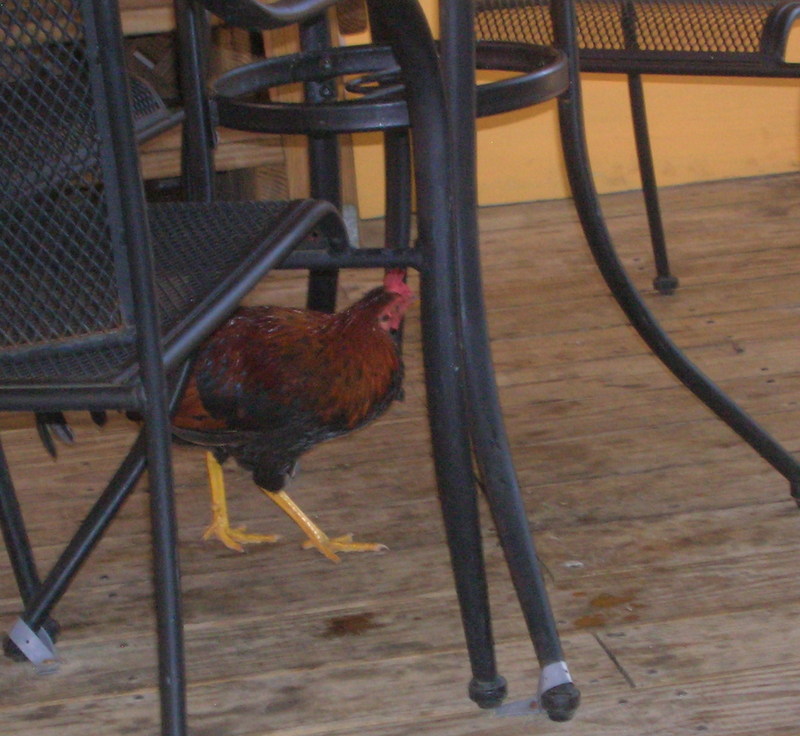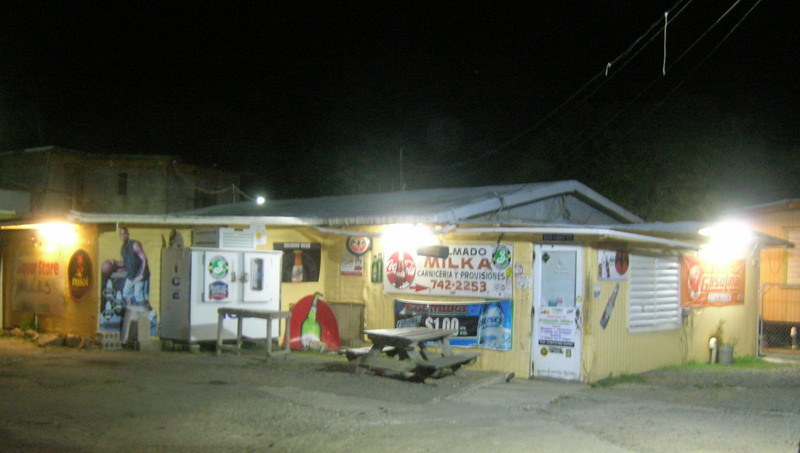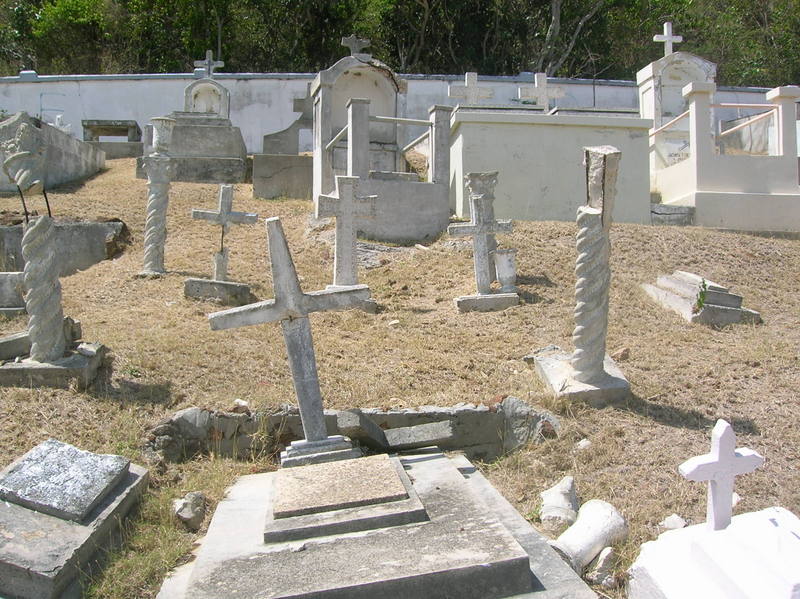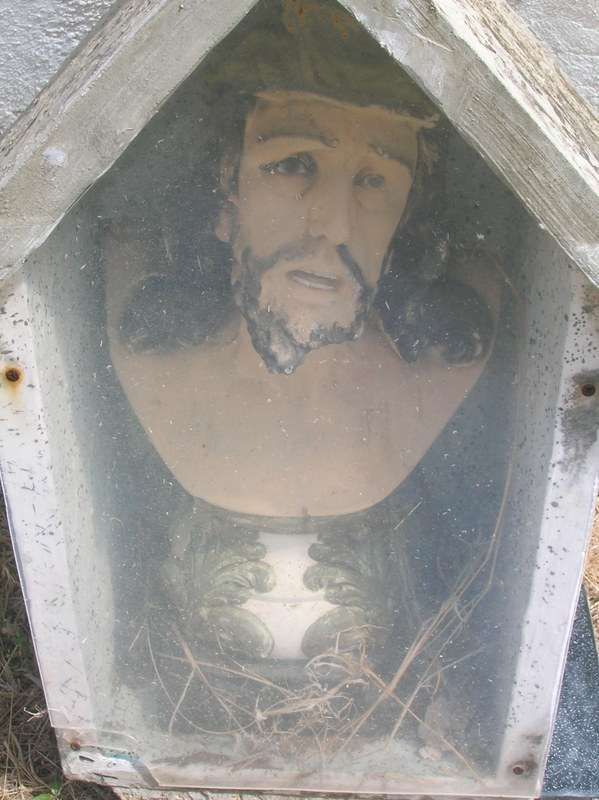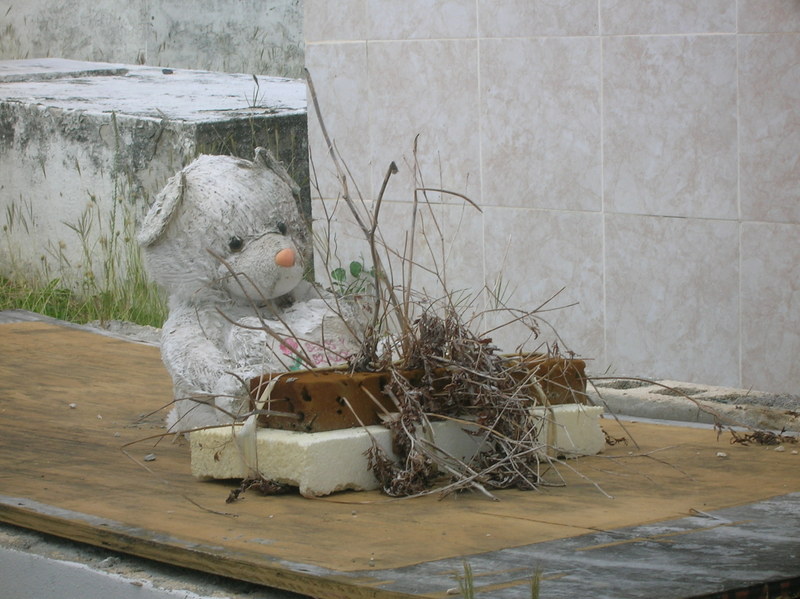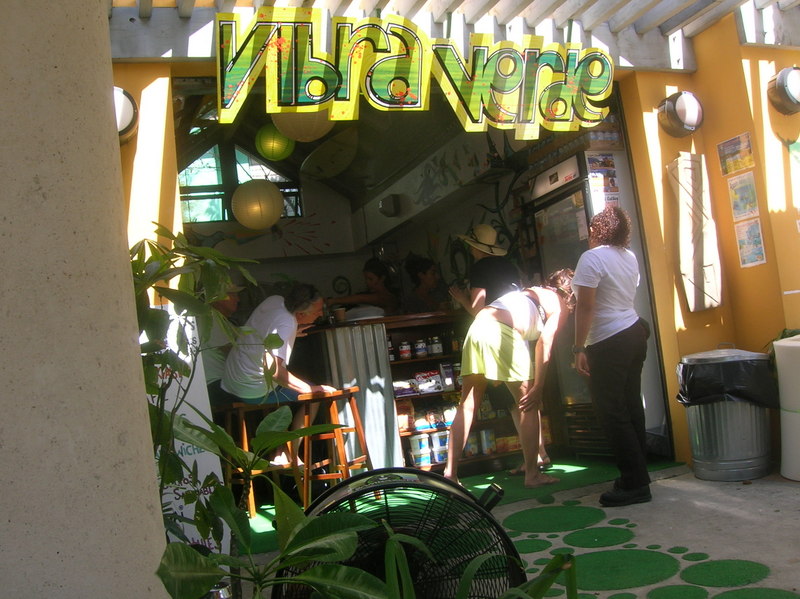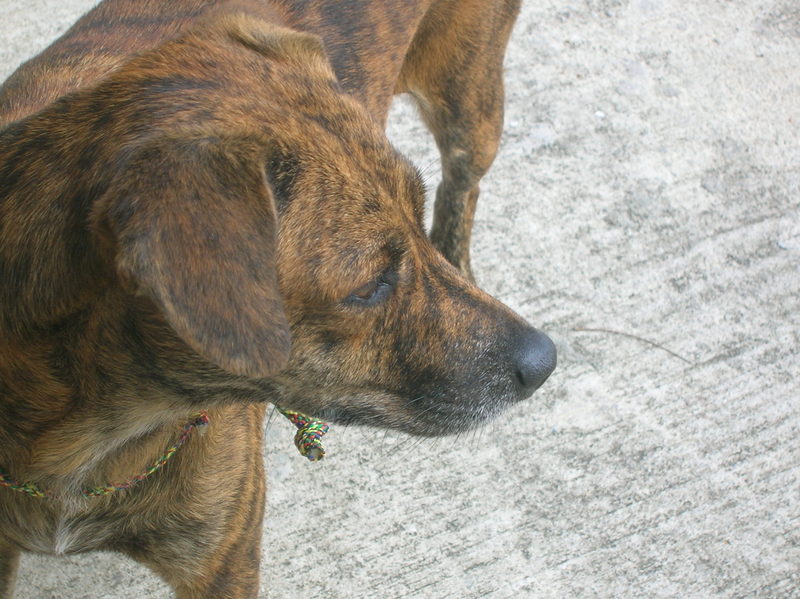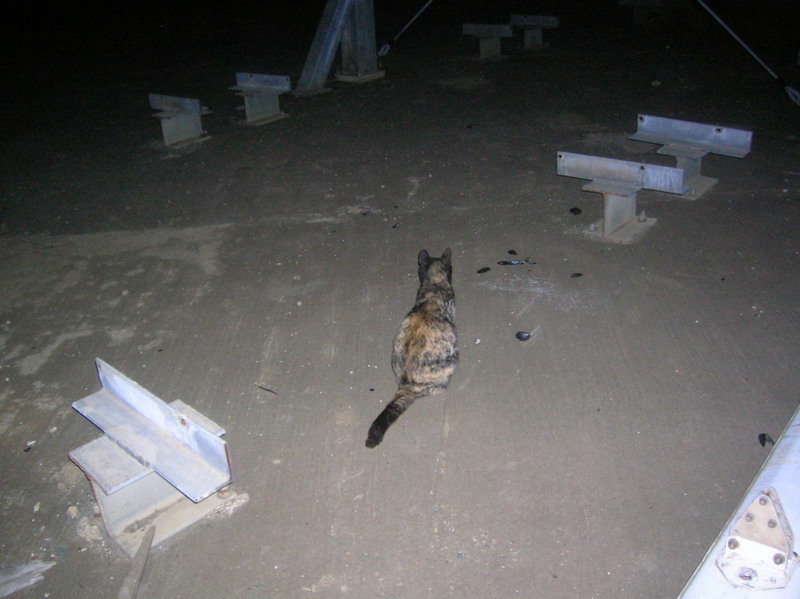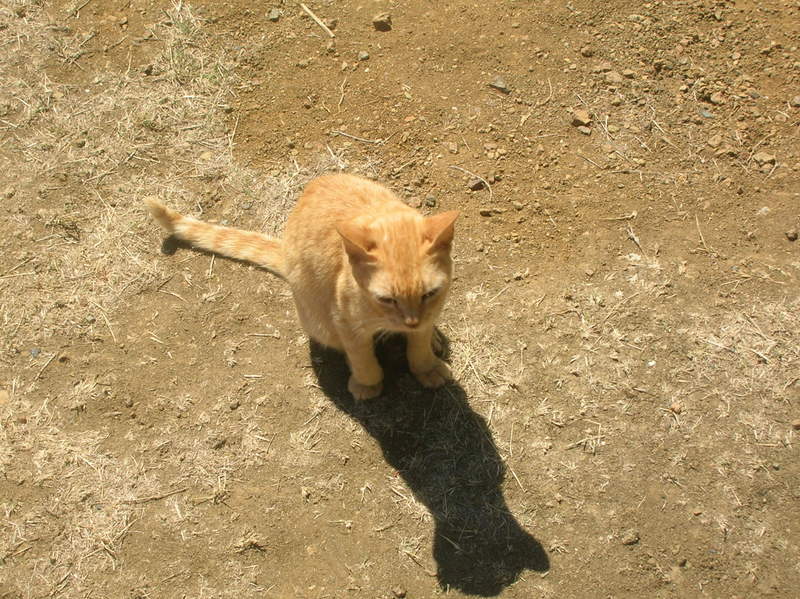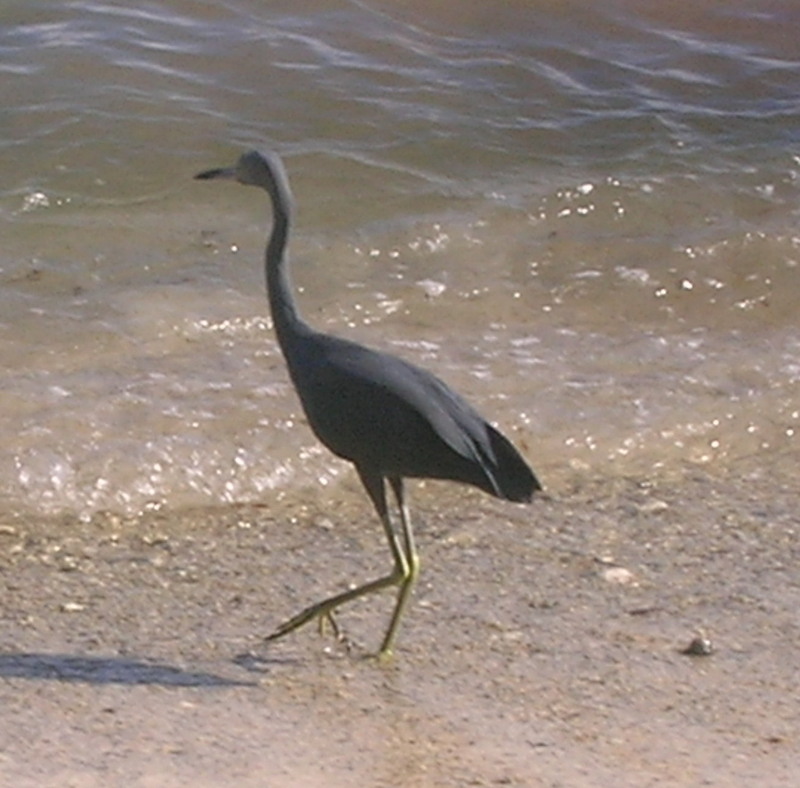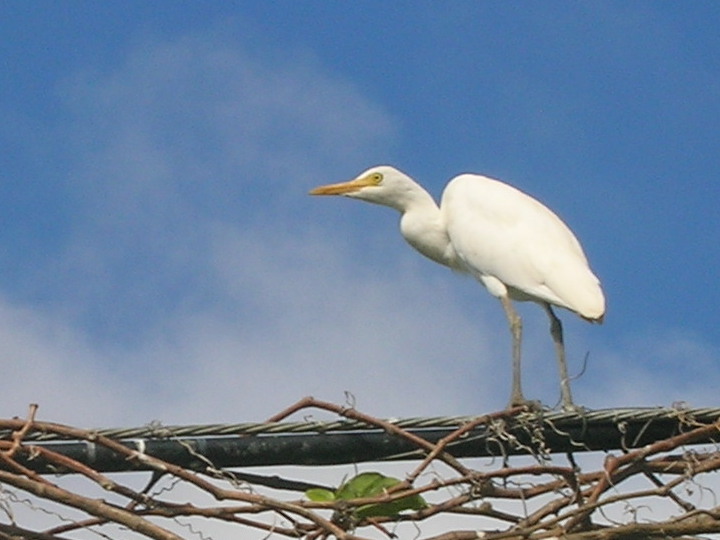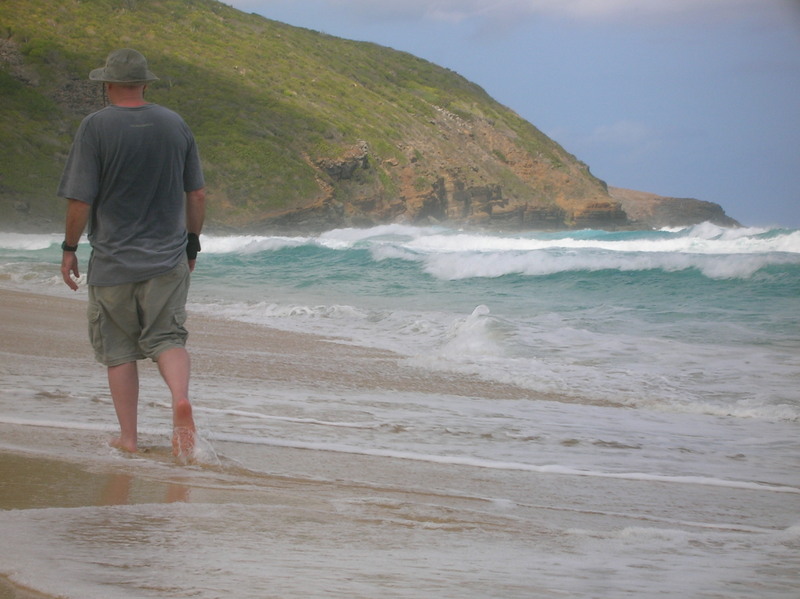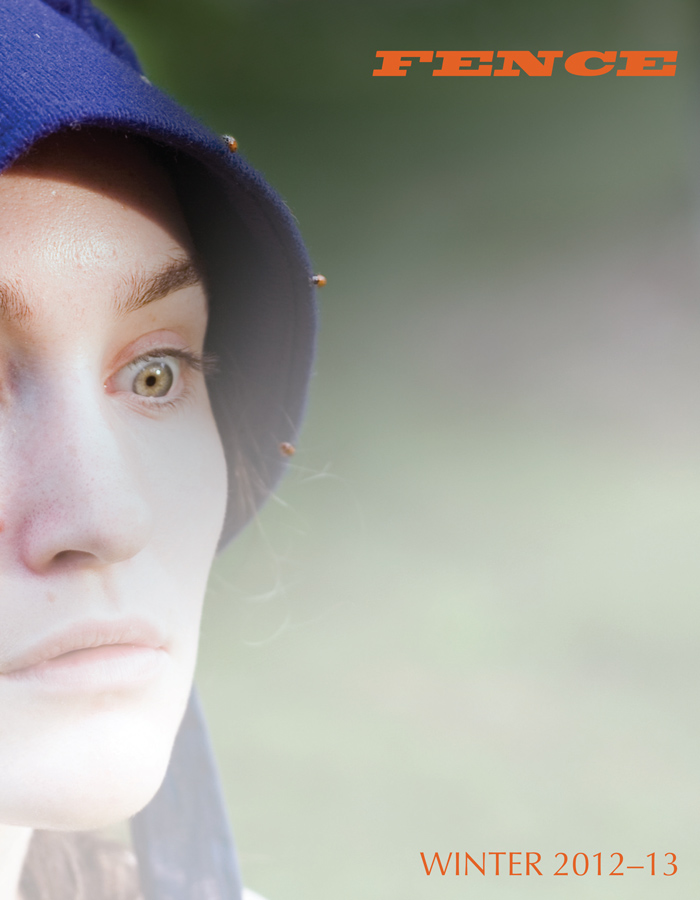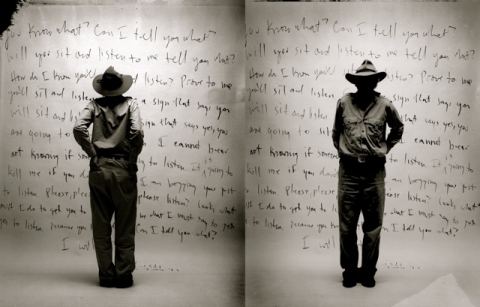[youtube]https://www.youtube.com/watch?v=UM6nWRXCQD8[/youtube]
Career change coming. I want to be in an Italian Indie rock band. I want to grow a beard and live in black and white. Really!
dg
[youtube]https://www.youtube.com/watch?v=fwVj6FSa5jg[/youtube]
I remember this movie, one of the first I ever saw. Another connection: My father went to Mexico for a vacation with the town doctor some time after WW 2 but before I was born. They went out for dinner, and Tyrone Power, who was in Mexico filming, was eating at the same restaurant. Things got mixed up. My father got served Power’s meal by mistake. He went over and said, I think this is yours. I think Power invited them over, and they all sat around for a while. This was my brush with greatness. I have been trying to turn it into a story ever since.
This is a very authentic movie about the Royal Canadian Mounted Police. The dialogue is authentic. “The white dog has killed my brother.” “The Long Knives are as many as the pine needles in summer.” James Joyce never wrote lines like that. And the anthropological detail is obviously authentic. Even the trees look authentic. Some day they will study this movie to know how things were in early Canada.
Actually, things haven’t changed much.
dg
[youtube]https://www.youtube.com/watch?v=35AEqxUpyL0[/youtube]
Fascinating, but I am of two minds. The way Murdoch dismisses abstract art raises a red flag for me (and reminds me of the time I had dinner with Joyce Carol Oates and she startled me by casually dismissing all experimental literature as work done by lazy writers). It tells me that she is speaking out of a stance (philosophical, ideological, aesthetic) that one might call Anglo-Realism, or maybe Shopkeeper Realism, the kind of stance that suggests the novel begins with Defoe, not Cervantes. Nonetheless, I value Murdoch’s words. She wrote a little book of essays called The Sovereignty of Good that changed the way I composed my thesis at Edinburgh, these many years ago. A brilliant little book that speaks of art, love, and prayer and makes sublime sense of the three together.
dg
[youtube]https://www.youtube.com/watch?v=m47A0AmqxQE[/youtube]
[youtube]https://www.youtube.com/watch?v=DTSfBj8R3xI[/youtube]
[youtube]https://www.youtube.com/watch?v=maGN8–MhIQ[/youtube]
[youtube]https://www.youtube.com/watch?v=ahDWiS-X_nM[/youtube]
[youtube]https://www.youtube.com/watch?v=-Wdc7DQv3RA[/youtube]
Just a nice piece of news to share with everyone. NC Contributor Jacob Glover graduated with a BA in Combined Honours in Contemporary Studies and Classics from the University of King’s College, Halifax, Nova Scotia, this afternoon. The ceremony took place in the Great Hall of All Saints Cathedral (Anglican) and concluded with the singing of “God Save the Queen” as is surely fitting on all such occasions. It is safe to say that the young man’s father was proud; he had a lump the size of a wheelbarrow in his throat. Jacob is working on a new piece for NC (though probably not tonight.)
dg
One of those recent trips took me to Canada, where I was one of six artists participating in a couple of mixed-genre events. These were arranged by the wonderful Ontario poet and essayist John B. Lee, whose works are so copious, accomplished and varied that I can’t single out any one, two or three books by his hand to recommend. Google this terrific author and you won’t be disappointed, whichever book may catch your fancy.
Besides John, I sat in with Marty Gervais, another more than noteworthy Canadian poet (and journalist), one whose modesty, both personal and literary, belies a huge soul and deep insight; and with longtime friend Douglas Glover, whose readings of some of his short-shorts (though he practices a number of other fictional and essayistic modes) roused the packed houses, first, in Port Dover, a wonderful and funky Lake Erie fishing town, and then, two hours to the west, in Highgate, where we performed in a beautiful old Methodist church, reclaimed as an arts center.
I must likewise mention the two musician-songwriters who rounded out the bill. Young Michael Schotte is, simply, a guitar virtuoso; check him out too. And our master of ceremonies, Ian Bell, curator of the excellent Port Dover Maritime Museum, is also a fine instrumentalist. Ian is also author of song lyrics that are every bit as “poetic” as anything else I heard on those stages. Look him up– and prepare to be mightily impressed.
via Sydney Lea’s Blog: Don McKay and Canada’s cultural riches.
A female Pileated Woodpecker flew into my front window this afternoon. She was down on the concrete path when I found her, one wing splayed out, one foot curled under at an ugly angle. But she was moving her head. I retrieved my handy turkey baster and got her to drink some water, and then some more. She seemed to get the idea of the baster. Then I folded her wing back straight. And waited. She lurched finally and got her foot underneath correctly, had some more water, and then started to vocalize. Wonderful to hear. You never get close to birds like this. Very satisfying to see her back in the trees. You can see that in the first photographs she looks pretty stunned, eyes half-closed, beak open. Someone should write up the medical use of turkey basters.
dg
[youtube]http://youtu.be/vbTcgevywZE[/youtube]
[youtube]http://youtu.be/TtiAc-4L7fw[/youtube]
[youtube]http://youtu.be/oIoS6HyZ1Ik[/youtube]
Here’s an interview I did with the Irish novelist John Banville in 1995 after the publication of his novel Athena. Below are two of my reviews of Banville novels. At the beginning and the end, Banville (politely) disagrees with what I say about him (also in the middle somewhere). His disagreement seems a bit disingenuous. I still read his complex and intellectually rich books and shake my head at the idea that he is just describing the world he sees when he looks out his window. In any case the main thing in an interview is to get the subject to say something interesting. It’s a treat to hear Banville’s voice as he discusses his own work; there is a stretch when he begins talking about the beauty and tenderness of the world that is just gorgeous.
Once again, I retrieved this from a box of tapes, clumsily recorded and even more clumsily transferred to an mp3 file. There are a couple of skips near the beginning for which I apologize.
dg
Banville Part 1
[podloveaudio src=”http://numerocinqmagazine.com/wp-content/uploads/2013/04/Banville-Part-1.mp3″]
Banville Part 2
[podloveaudio src=”http://numerocinqmagazine.com/wp-content/uploads/2013/04/Banville-Part-2.mp3″]
Banville Part 3
[podloveaudio src=”http://numerocinqmagazine.com/wp-content/uploads/2013/04/Banville-Part-3.mp3″]
On John Banville’s Ghosts
John Banville is an Irishman with the gift of blarney, an author who writes gloriously impossible novels that seem to evanesce like peat smoke or mist out of the bogs of that strange island, phantasmagoric novels that swirl and race and swallow their own tails or dance between morbid melancholy and golden, baseless hope.
He is best known in America for two historical novels, Doctor Copernicus and Kepler, about the Renaissance astronomers who turned the known world upside down. But lately Banville has returned to the Irish setting of his earlier books (Birchwood, Long Lankin), a fantastically sterile, degenerate place of decaying aristocracy, mythically dysfunctional families, murder, incest, drunkenness and mega-alienation.
In Banville’s last novel, The Book of Evidence (1989), Freddie Montgomery, a failed scientist, impecunious husband, drunkard, liar and all-round weasel, abandons his wife and child in Spain and returns to Ireland to try to raise money by selling his late father’s third-rate art collection. Unfortunately, Freddie’s eccentric and possibly lesbian mother has already sold the paintings to a wealthy dealer living on a nearby estate. While stealing one of the pictures back, Freddie murders the maid (one of the most pathetic, grotesque and revoltingly detailed murders in literature-a joy to read) and ends up serving a life sentence.
In Ghosts, Freddie resurfaces 10 years later (a life sentence in Ireland) as the novel’s unnamed narrator, ex-con, amanuensis and ghost writer to a retired art history professor living on a sparsely inhabited island with his books and a galumphing servant-keeper named Licht (sort of a cracked Prospero with his Caliban-plenty of Shakespeare allusions here).
The professor is supposed to be an expert on Vaublin, a minor Parisian painter who apparently went mad or was haunted by a mysterious imitator in the months leading up to his death. In fact, the professor isn’t an expert and has fraudulently authenticated as Vaublin’s a little masterpiece called “Le monde d’or” (“The Golden Word”), which made up part of the collection Freddie pillaged in The Book of Evidence. He is happy to hand over the work of writing Vaublin’s biography to the maid-murdering narrator.
All this is background, and most of it comes clear late in the book. The connections between Ghosts and The Book of Evidence are pleasing to note without being necessary to the reading of either work. I mention them only because they are about all that can be said with certainty about what happens in Ghosts.
Ghosts actually begins with a shipwreck (shades of The Tempest again). A small band of tourists-two women, an old man, a Mephistophelean character named Felix and three children-is unceremoniously dumped on the island by a drunken ferry captain who runs up on a sandbank at low tide. The tourists feel a mixture of strangeness and familiarity as they clamber up the dunes to the professor’s house.
These tourists bear a striking resemblance to the figures in Vaublin’s painting of the Golden World. In fact, they may be the people in the painting come to life or they may be real people who have found themselves in a painting (or a novel). And, of course, it may be a fake painting or an authentic painting painted by a fake Vaublin.
Suddenly, Banville’s little book drops down a rabbit hole of complexity, with the text oscillating between what you might expect from a normal novel in terms of character and plot and a bizarre aesthetic universe governed by the literary laws of recurring imagery, parallel structure, doubles and literary allusion.
Nothing much happens in Ghosts, and at the same time a great deal happens. The old man in the Panama hat, for example, becomes confused, then begins to obsess, trying to remember the name of that golden “thing they keep the host in to show it at Benediction.” He wanders off along the dunes, falls down in a faint, then returns to the house even more confused.
The old man’s obscure drive to remember is less an aspect of characterization than the strange feeling a real person might have if his brain were being written into by a conniving novelist named John Banville. The missing word is less important than the fact that it is missing and that it is golden and hence stands for the old man’s dreamy awareness that he has stumbled into an alternate, ghostly universe called the Golden World.
After a series of more or less similarly inconsequential events, the little group of tourists gets back into the ferry, which refloats with the tide and disappears. All except for Flora, a vulnerable, rather pretty nanny who has been taken advantage of by the nefarious Felix (sometimes referred to as Freddie’s double). Flora remains in the house to save herself from these unwanted attentions, and briefly it seems as if Ghosts might flower into a romantic entanglement between Freddie and Flora. But then, Flora, too, drifts away.
“Such stillness; though the scene moves there is no movement,” says Freddie, describing Vaublin’s painting “Le monde d’or” (and by extension the novel itself). “What does it mean, what are they doing, these enigmatic figures frozen forever on the point of departure, what is the atmosphere of portentousness without apparent portent? There is no meaning, of course, only a profound and inexplicable significance.”
This mysterious nimbus of significance is the central marvel of Banville’s novel. His characters seem to do nothing but are suffused with a mixture of valor and sadness, a steadfastness in the face of a fate they know they cannot know. And his text glows with a gritty eroticism—remarkable, considering there is no explicit sex in the book. On every page there is just the ghostly shadow of something that never appears and is never named.
This is unsettling stuff for anyone who likes a conventional story. But it should not be dismissed as self-conscious game-playing or decadent estheticism. The conventional novel relies on a certain set of technical devices (plot, character, setting and theme) to produce a fictional world that is a simplified, stereotyped and rationalized version of our own—a world where motives drive people ineluctably into action, where cause achieves effect.
Banville isn’t trying to write this semblance of reality. Rather, he is rocketing his readers into a kind of hyper-reality, a world at the outer limits of human sensibility, a world whose complexity is not reduced by the everyday filters of common sense and the pressing need to get groceries or feed the cat, a world that begins suddenly to seem more like a dream or a poem than what we normally call life.
In this world we are constantly reminded of the brevity of existence, how we always seem to have just arrived while on the point of departure. We are bemused and battened by messages the provenance of which we are only dimly aware. We push along in our daily heroics without any real sense of purpose, with only the feeling perhaps that there should be a purpose, always bewildered by the feeling of being other than what we seem to be.
Ghosts is a strange and beautiful novel about art and the wistful inconsequentiality of being, a little paean to the human heart as it mutters its defiance into the puzzling void.
—Douglas Glover, Chicago Tribune December 12 1993
b
On John Banville’s Athena
John Banville is an author singularly unafraid of the stigma of hyperbole and baroque excess. His novels are littered with incestuous, decaying families, waifish women inviting the whip or the hammer, and drunken, ineffectual male orphans (real or figurative) who move through an fog of decadence, drift and dread worthy of the great Gothic masters.
Known best in America for his historical novels Kepler and Dr. Copernicus, Banville has lately been mining a vein of contemporary Irish grotesquerie centered on a serial character called Freddie Montgomery. In The Book of Evidence (1989), Freddie, drinking too much and down on his luck, tried to steal a painting from a squire’s country house and ended by murdering the maid with a hammer. In Ghosts (1993), free after serving 10 years in prison (a life sentence in Ireland), Freddie turned up on a sparsely populated island where he had been hired as secretary to an aging professor whose specialty was a little known Parisian painter named Vaublin.
If there can be said to be a conventional plot in Ghosts, it turned on Freddie’s abortive love affair with a young woman dropped ashore by a drunken ferryboat captain. This woman and her shipmates bore a striking resemblance to figures in a Vaublin painting called “The Golden World”—part of the collection Freddie pillaged in The Book of Evidence and probably a fake.
In Banville’s new novel, Athena, Freddie’s back, this time in Dublin under the assumed name Morrow, hired by a man called Morden (who works on a street called Rue) to authenticate a cache of 17th century paintings on classical themes. In contrast to Ghosts, Athena is knee-deep in conventional plot elements. There is a cockamamie art fraud plot—something out of The Rockford Files—with a cop called Hackett and a sinister transvestite gangster called Da. There is a plot of sexual obsession and sadomasochistic love between Freddie/Morrow and a girl called A. And there is an astringently tender subplot involving Morrow’s elderly Aunt Corky (not a blood aunt; the connection is vague), who moves into his dingy flat to die. In the background lurks a mysterious serial killer who drains his victims’ blood.
For much of the novel the cracked love story between Morrow and A., a young woman with preternaturally white skin and bruised lips, takes center stage. From the outset the bumbling, chronically depressed Morrow (not since The Ginger Man have we met a character so engagingly and self-destructively melancholy) is besotted and yet knows that she will leave. His breathless, goggle-eyed account (reminiscent of Humbert Humbert’s in Lolita) of their wanton trajectory, from innocent abandon, to voyeurism, to a menage a trois in a seedy brothel, to spanking and whipping and complicit infidelity, is a droll parody of Victorian pornography—melodramatic, perfervid and decidedly unsexy as the situations become more bizarre and mechanical.
Though Freddie/Morrow has taken pains to conceal his identity, everyone else in the novel seems to know exactly who Morrow is—from the criminals who hire him to authenticate their paintings, to the investigating detective, to A. herself, who shocks Morrow one day by asking him to strike her the way he struck that unfortunate maid in The Book of Evidence. Even Aunt Corky hints that she may not be his aunt but his mother. At every turn, an atmosphere of mystery, unreality and downright fraud dogs his steps, so that, though Morrow is telling the story, he seems more and more like a character in someone else’s book, a cog in someone else’s plot.
And interspersed throughout Athena there are catalog descriptions of the paintings entrusted to Morrow, paintings on classical themes of violence, rape and transformation that bear, on the face of it, a strong resemblance to the events of the book (just as in Ghosts the characters seem to have walked out of the Vaublin painting).
So Athena becomes a kind of echo chamber of comic despair in which everything seems fated or written by another hand, where gods toy with humans and turn them into beasts, where a miasma of solipsism hangs in a world of dream, and mysterious lost children, doubles and putative parents hover just out of focus. When A. disappears near the end of the novel, she leaves a note: “Must go. Sorry. Write to me.” But there is no signature and no address, and Morrow is left with only the presence of her loss, a pneumatic void into which he writes his words.
All this is peculiar stuff—heady, hilarious, hyperbolic and strange. Banville’s literary ancestors are writers like Poe, Beckett and Nabokov. His novels are little wars between a repressive, fusty, petty bourgeois sensibility (Irish, Victorian and Modern, with a capital M) and the dark, bubbling, drunken, violent, godlike forces of sex and madness that lurk beneath the surface of life and language.
On the strength of his novels, Banville is not so much a postmodern writer as a pre-modernist, and his critique of modernity rests on a romantic, Arcadian vision of our pre-Renaissance past. Part-way through Athena, Morrow explains how the invention of perspective in painting destroyed the blissful, circular forgetfulness of the past, “spawning upon the world the chimeras of progress and the perfectability of man and all the rest of it. Illusion followed rapidly by delusion: that, in nutshell, is the history of our culture. Oh, a bad day’s work!”
From this vision, everything else follows: Morrow’s confusion, the novel’s atmosphere of fog and drift result from the application of narrowly rigid concepts of self and reality to a world that is ever and always mysteriously other. Stripped clean of contemporary talk show anodynes and psychobabble bromides, the world of Athena is finally hyper-real—one in which in which loneliness, loss and despair throb at the very center of being, and poetry, once again, is possible.
—Douglas Glover, Chicago Tribune July 9 1995
Back from epic, marathon reading and interview trip to Ontario. Arrived in an ice storm. Gorgeous reading events hosted by Ian Bell (his father was my Grade 11 history teacher) and John B. Lee (multiple publications on NC). NC Contributing Editor Sydney Lea was there and I managed to get a photo of him looking like God at the reading in Highgate. Also my very first book publisher, Marty Gervais. The mix of music (Ian Bell and the amazing Michael Schatte) and literary reading was surprisingly entertaining. People paid money to come. Doing two events back to back with a long car ride in between (with stops to visit memorials for famous forgotten Canadian poets and to cast an eye on John B. Lee’s ancestral farm) made me feel like I was on tour with a troupe of actors.
Sunday, I had brunch with the Jernigans, Kim who used to edit The New Quarterly, and Amanda, the poet, and her husband, the photographer John Haney (both Amanda and John have appeared on NC). This was all the more remarkable since they had not had electricity since Thursday (the ice storm). Then I drove to Waterloo to see Jonah and also Dwight and Kathy Storring (Dwight published a play on NC; their son Nathan has an essay here).
Do you get the impression that there are secret NC cells planted all over (you know, mostly so I can travel without paying for food)?
The photo below was taken by Zach Melnick during the War of 1812 documentary interview he did with me on Thursday in the farmhouse living room.
dg
DG being interviewed at the farm, photo by Zach Melnick
Sydney Lea reading in Highgate, Saturday evening
[youtube]http://www.youtube.com/watch?v=e1J5z3Kwa94[/youtube]
Michael Schatte compilation, on tour with us he performed solo
Possum I found in a den by the pond at the back of the farm
[youtube]http://youtu.be/_tKjWdrD9LU[/youtube]
You can hear the dog whimpering next to me. Notice the feet. I once raised a young opossum, called Snuffy, at first I kept him in a fleece-lined leather glove (approximating a mother’s pouch, I thought). My friend Bruce Hiscock did a drawing which hangs in the house. When he seemed big enough, we let Snuffy go in the woods. My great-grandfather was an amateur poet who called himself “Possum” and kept a stuffed opossum in his store. I published an essay about him in The New Quarterly a couple of years ago. More information than you need, right?
First flowers, Coltsfoot
My father once planted a small field with Scotch pine to sell as Christmas trees. As he once observed, they kind of got away from him.
Daffodils in the woods. There are patches all through the woods, planted by DG’s mother.
The farm buildings from the east.
Dog
Dog investigating possum den
Coltsfoot
Geese by the pond
Laneway. To the right, a spruce windbreak. To the left, a field of oak and white pine planted over 15 years ago for eventual harvest.
Here is an interview I did with Robert Coover in 1996 shortly after the publication of his novel John’s Wife. We were talking over the phone; the interview starts slowly as we feel each other out. But as it gathers steam Coover says marvelous things about his forerunners, Ovid, Kafka, Rabelais and Cervantes. He talks about how, when he planned the novel, he actually started with a paragraph count and the idea of a Bell curve. He also does a lovely reading of a passage — as he says, his first “telephone reading.”
This is from a raw tape that has been in a cardboard box for years; so my usual apologies for the sound quality.
Click the little triangular button to listen to the interview.
Coover Part 1
[podloveaudio src=”http://numerocinqmagazine.com/wp-content/uploads/2013/03/Robert-Coover-Douglas-Glover-Johns-Wife-Part-1.mp3″]
Coover Part 2
[podloveaudio src=”http://numerocinqmagazine.com/wp-content/uploads/2013/03/Robert-Coover-Douglas-Glover-Johns-Wife-Part-2.mp3″]
—Douglas Glover
See also interviews with Gordon Lish, John Hawkes & William Gass.
The Enemies of the Novel: DG Interview With John Hawkes
Causing Damage — Captain Fiction Redivivus: DG Interview With Gordon Lish
Limericks, Degraded Modernism and The Tunnel: DG Interview with William H. Gass
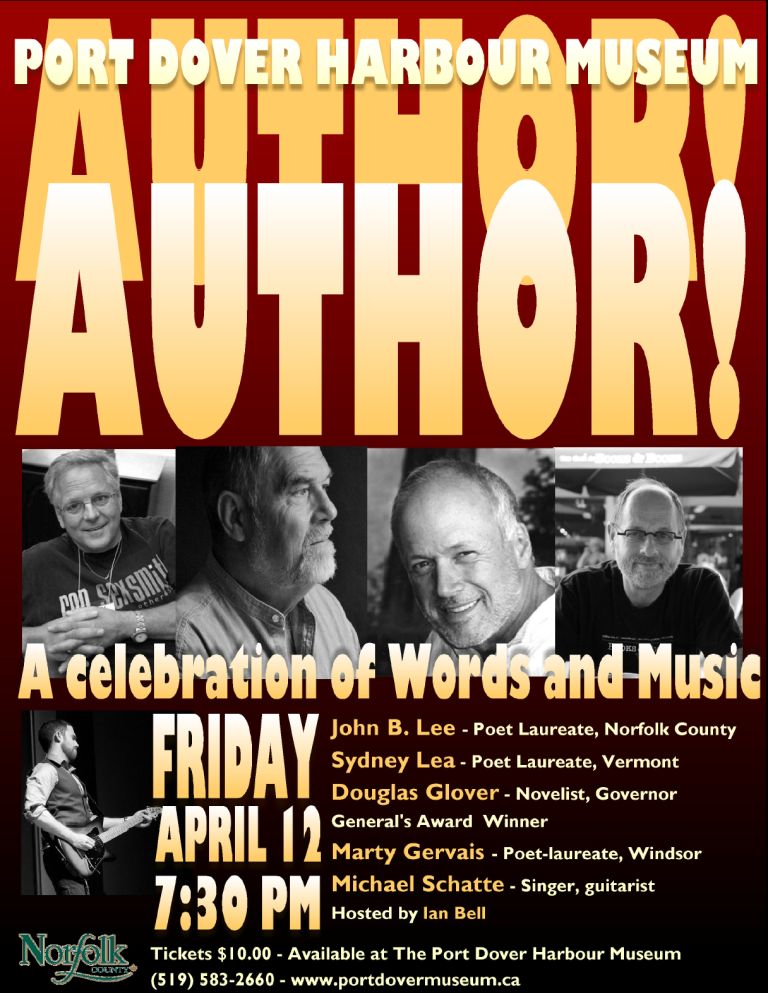
The earth will tremble. Nothing short of that. The stars are in alignment. Sydney Lea once gave the best poetry reading dg has ever been privileged to witness. Three poet laureates! Not to mention that Port Dover is itself the scene of many youthful scrapes and escapades of dg’s youth which, happen the day, he may be prevailed upon to reveal at the event.
Ed. Note: Little known facts about Port Dover — In 1814 Americans came across the lake and burned the town; in retaliation Canadian and British troops went down and burned the White House (well, okay, it was mostly the British).
dg
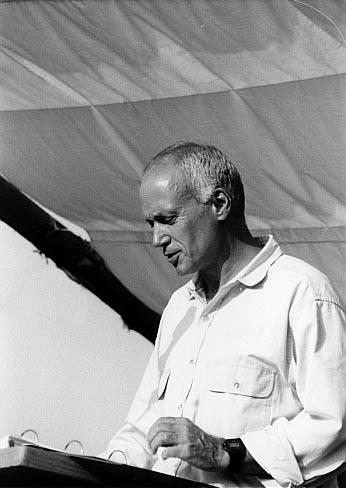 Douglas Glover, photo by Danielle Schaub
Douglas Glover, photo by Danielle Schaub
 Sydney Lea
Sydney Lea
 John B. Lee
John B. Lee
 Marty Gervais
Marty Gervais
 Michael Schatte
Michael Schatte

A few of you have asked about dg’s mother’s hen, Annette, who at last report had moved into the farm kitchen after the other hens started attacking her. During dg’s visit to the farm last week, Annette was under foot, under the table and in the pantry, quite unperturbed by people and dogs. Well, she died Thursday night. DG’s mother, guessing that something was up, got a cardboard box, put the box on end so that the side was open, and made a nest of straw (normally chickens roost, only “nesting” to lay eggs). The chicken settled down in the box and only came out once after that. And in the morning she was dead. DG’s mother says, “I’ll never name another animal. If I get I dog, I’m just going to call it “dog.”
BTW, Jean is well past 90 and survived major cancer surgery last year and is still looking after the farm by herself. Here she is a couple of years ago, reciting a Walter Scott poem.
dg
Ground still frozen, huge trucks ferrying in loads of fertilizer. The tractor is just there for colour and to make nice circles in the snow. Old farming joke: Contrary to popular belief, plants don’t get nutrients from the soil. The soil is just to hold the plant down and then you pour fertilizer on it. These fields will be planted with canteloupes.
[youtube]http://youtu.be/UvvzK3nzqO0[/youtube]
The next day it thaws. A pile of irrigation pipes sinking into a field of melt water.
The swamp at the back of the farm is the headwaters of a creek that eventually flows into Lake Erie, twenty miles away. This is precisely where the creek begins.
Cedar trees in a copse dg’s father used to call Hernando’s Hideaway (his reasons remain obscure but mysteriously romantic).
Wild turkey tracks, not to be confused with chickens (see below).
Chickens. Reminded DG of Culebra.
Sick chicken sleeping by the dishwasher in the farm kitchen. (The chicken’s name is Annette.) The chicken has moved into the house. It is like the pioneer days when people and farm animals lived together.
Chickens haunt dg’s dreams.
—dg
Time for a little merengue!
[youtube=https://www.youtube.com/watch?v=J-PckWpsdYs]
[youtube=http://www.youtube.com/watch?v=dPwIsTanhzs&feature=related]
Longtime readers of the NC Blog will recognize these videos (late at night, merengue phantoms haunt me). I am still looking for a suitable Walter Benjamin or Viktor Shklovsky quote to fit in here. Surely, Benjamin had a theory about merengue and modernity. I seem to recall a passage in The Arcades Project —
dg
DG working on his new book at Brava Beach, Culebra. Beach attire includes $6 bathing suit purchased at Zeller’s in Simcoe, Ontario, circa 2003. Note snorkel gear, coconuts, palm frond lean-to. On this trip, dg was introduced to three major life-changing innovations: mojitos, snorkeling & mojitos.
Brava Beach
Brava Beach
Resaca Beach
Susie’s Restaurant with outside bar at far left. Next to the bar is the driveway to a gas station behind the restaurant. Then the canal. The driveway is usually crowded with cars till 6pm. At 6pm the gas station closes and the bar opens.
Feral cat, one of many that hang out in front of Susie’s Restaurant. There were cats everywhere, cats and feral chickens. Deep in the woods there were chickens.
Five cats outside of Susie’s. See the eyes.
Rooster under the table at Zaco’s Tacos where dg drank mojitos in the afternoon.
Milka’s, one of the island grocery stores, also liquor store and valuable source of Häagen Dazs ice cream after mojitos at Dinghy Dock.
A sign of the times.
The old San Idelfonso graveyard, still in use. San Ildefonso was the original island village, but the American Navy moved all the people out to Dewey when the island became a Naval training station.
Canal that runs from one side of the island to the other. This is looking east toward the ferry dock and the town square.
The canal photo above was taken from the bridge. See the dinghies docked just left of centre at the bottom? That’s a restaurant called Dinghy Dock. Dinner starts at 6pm. You eat right next to the water and huge tarpon gather under floodlights in case someone throws them food. At 7pm Bulldog bats started swooping over the water, fishing with their feet. Amazing to watch. Good place to sit and drink mojitos before wandering home to bed.
Dinghy Dock Restaurant
El Eden Restaurant.
Feral cats at the food kiosks at Flamenco Beach. There is a sign at the entrance to the beach that reads NO PETS. But there are chickens and cats all over the place.
Great breakfast and lunch. The owner has a friendly dog, too. One morning when dg was missing his dog, the restaurant dog came and lay down on his foot.
Vibra Verde dog, a friend to authors and a shrewd manuscript critic.
A vicious wild cat, ready to pounce and viciously maul something, viciously.
Another extremely vicious cat. This one rubbed up against dg’s legs and dg briefly thought about bringing it home in his luggage.
Road side horses. Moderately vicious.
Dewey from Resaca Mountain.
Tamarindo Beach
Land crab
Heron
Egret
DG, thinking about mojitos, Resaca Beach. Wearing his ultra-cool Lake George Arts Project Bands ‘n Beans t-shirt. Shorts by Ralph Lauren (purchased economically at the Lake George outlet store). Watch, a Casio Illuminator. Note the vast crowds on this extremely crowded beach.
Our tracks. Resaca Beach. This place should be avoided because of the crowds.
—Photos by dg and mf
Researchers at Keele University, UK, and Amridge University, USA, have discovered that Genesis uses an early example of a technique known as ‘bracketing’, which sandwiches one theme between two mentions of another theme. The technique is commonly used today, such as when bad news is sandwiched between two bits of good news. The new analysis of Genesis reveals a striking pattern between the two key themes of ‘life’ and ‘death’. The opening and closing verses of the book contain frequent mentions of life, whereas mentions of death are only found in clusters in the middle.
via New analysis of Genesis reveals ‘death sandwich’ literary theme.
Ever so slightly reminds me of Pedro Pires’s Danse Macabre; music and corpse. Great stuff for late night watching/listening. Or, do I want something like this for my wake? Just thinking ahead…
dg
[youtube]http://www.youtube.com/watch?v=o7rpn1I_tis[/youtube]
My elderly neighbour just knocked on the door to check and see if I was okay. He said he hadn’t seen me leave the house lately and thought I might be sick. He said he noticed the lights were on till the early morning, but that didn’t mean anything; people go away and leave their lights on to fool robbers. He offered to bring me food. This was very sweet. He walks with a cane, has had multiple strokes, has glaucoma. But then I became alarmed: Without being conscious of my decline I have become a figure of public charity, a lost soul. In the evenings now I see the ghost of my old cat Hobbes prowling in the backyard.
dg
I saw Easy Rider the first time in a movie theater in Edinburgh when was in graduate school, age 21. It’s a picaresque and a pastoral combined. A dark pastoral because, hidden in the vast and gorgeous land, is a world of violent intolerance. It had a gloriously romantic effect on me that I find difficult to articulate in its complexity. Among other things, I grew a full beard and hair down to my shoulders (for many of you who have only known me in my dotage, this may come as a shock). All The Band members except Levon Helm were southwestern Ontario boys. Robbie Robertson is from Toronto. Garth Hudson is from Windsor. Richard Manuel is from Stratford. And Rick Danko was from Simcoe, where my mother grew up, just ten miles from our farm. They were local heroes, especially to my younger brother who started playing the guitar in high school. His first band was called Norfolk (after the county where we grew up). His bass player remembered being a little boy and Rick Danko feeding him raw hamburger (or sausage) over the meat counter at the butcher shop where he worked. I don’t know if this story is true anymore. But it was a story. I tell you this for no reason — it came to mind after writing tonight.
dg
[youtube]http://www.youtube.com/watch?v=QMy3AbpkYvw[/youtube]
I discovered Lhasa de Sela’s music in 1999 and she died of cancer New Year’s Day in 2010. Not enough time all the way around. She was born American, raised partly in Mexic0, and ended up living and singing in Montreal. And she could sing.
dg
[youtube]https://www.youtube.com/watch?v=AOLg_XY2cWA[/youtube]
[youtube]https://www.youtube.com/watch?v=AJaOptRE00E[/youtube]
Llorando
de cara a la pared
se apaga la ciudad
Llorando
Y no hay màs
muero quizas
Adonde estàs?
Soñando
de cara a la pared
se quema la ciudad
Soñando
sin respirar
te quiero amar
te quiero amar
Rezando
de cara a la pared
se hunde la ciudad
Rezando
Santa Maria
Santa Maria
—Lyrics via Lyricsmode.com
Student packets, story to write, this is where I go: order pizza from Pizza Time, splash vodka into a glass, listen to Lenny, and push on into the night.
[youtube]https://www.youtube.com/watch?v=JQm1OmLMNno[/youtube]
There’s a shoulder where Death comes to cry
There’s a lobby with nine hundred windows
There’s a tree where the doves go to die
There’s a piece that was torn from the morning
And it hangs in the Gallery of Frost
Ay, Ay, Ay, Ay
Take this waltz, take this waltz
Take this waltz with the clamp on it’s jaws
Oh I want you, I want you, I want you
On a chair with a dead magazine
In the cave at the tip of the lily
In some hallways where love’s never been
On a bed where the moon has been sweating
In a cry filled with footsteps and sand
Ay, Ay, Ay, Ay
Take this waltz, take this waltz
Take it’s broken waist in your hand
This waltz, this waltz, this waltz, this waltz
With it’s very own breath of brandy and Death
Dragging it’s tail in the sea
There’s a concert hall in Vienna
Where your mouth had a thousand reviews
There’s a bar where the boys have stopped talking
They’ve been sentenced to death by the blues
Ah, but who is it climbs to your picture
With a garland of freshly cut tears?
Ay, Ay, Ay, Ay
Take this waltz, take this waltz
Take this waltz it’s been dying for years
There’s an attic where children are playing
Where I’ve got to lie down with you soon
In a dream of Hungarian lanterns
In the mist of some sweet afternoon
And I’ll see what you’ve chained to your sorrow
All your sheep and your lilies of snow
Ay, Ay, Ay, Ay
Take this waltz, take this waltz
With it’s “I’ll never forget you, you know!”
This waltz, this waltz, this waltz, this waltz …
And I’ll dance with you in Vienna
I’ll be wearing a river’s disguise
The hyacinth wild on my shoulder,
My mouth on the dew of your thighs
And I’ll bury my soul in a scrapbook,
With the photographs there, and the moss
And I’ll yield to the flood of your beauty
My cheap violin and my cross
And you’ll carry me down on your dancing
To the pools that you lift on your wrist
Oh my love, Oh my love
Take this waltz, take this waltz
It’s yours now. It’s all that there is
.
Here at Harper’s is the Spanish version of Lorca’s poem and another translation.
dg
[youtube]http://www.youtube.com/watch?v=moFE_x7TrR8[/youtube]
Serendipity: the faculty or phenomenon of finding valuable or agreeable things not sought for; also : an instance of this (Merriam-Webster).
A week ago Melissa mentioned Aloysius Bertrand who influenced Baudelaire; she was reading Paris Spleen. At the time this did not quite register on my tracking mechanism. But early this morning, sleepless as usual, I was looking at Unjustly Unread (which you ought to read daily with your eggs and bacon) and happened upon the video of Ivo Pogorelich playing Ravel’s “Le Gibet” from Gaspard de la Nuit. Who could not be drawn, before dawn, to something called “The Gibbet?” I hunted around and discovered it was from a group of poems by Aloysius Bertrand. You can find the whole thing in French on Project Gutenberg. I found a translation by Nancy Bricard. E.g. “…the bell that tolls from the walls of a city, under the horizon, and the corpse of the hanged one that is reddened by the setting sun.” I listened to other piano performances and discovered that Pogorelich really has the most lorn and mournful affect.
Unjustly Unread lives in a cluster of other sites well worth looking at (most sites seem to live in clusters of like minded author/curators — an observation of Internet anthropology). So see also Will Schofield’s 50 Watts and Stephen Sparks’ Invisible Stories.
dg
LE GIBET
Que vois-je remuer autour de ce gibet? —Faust
Ah! ce que j’entends, serait-ce la bise nocturne qui glapit, ou le pendu
qui pousse un soupir sur la fourche patibulaire?
Serait-ce quelque grillon qui chante tapi dans la mousse et le lierre
stérile dont par pitié se chausse le bois?
Serait-ce quelque mouche en chasse sonnant du cor autour de ces oreilles
sourdes à la fanfare des hallali?
Serait-ce quelque escarbot qui cueille en son vol inégal un cheveu
sanglant à son crâne chauve?
Ou bien serait-ce quelque araignée qui brode une demi-aune de mousseline
pour cravate à ce col étranglé?
C’est la cloche qui tinte aux murs d’une ville, sous l’horizon, et la
carcasse d’un pendu que rougit le soleil couchant.
Taylor Davis-Van Atta who founded and edits the new magazine Music & Literature and who also contributes here occasionally just alerted me to this amazing piece of music. I think I introduced Taylor to Viktor Shklovsky, as I try to do with all my students. Theoretically Shklovsky is the inspiration behind much of what we try to do here at NC, art as device, art as content filtered through a mesh or organization or system of techniques. This sonata is lovely and tortured. It brings to mind that wonderful phrase in Joyce’s “The Dead” — “thought-tormented music.”
dg
[youtube]http://www.youtube.com/watch?v=aGQvnbM2aFc[/youtube]
[youtube]http://www.youtube.com/watch?v=49thhelGM_0[/youtube]
[youtube]http://www.youtube.com/watch?v=23X58zt3mbw[/youtube]
Four of my micro stories — “The Poet Fishbein,” “Wolven,” “Splash” and “Dear Richard” — are just out in the new issue of Fence. I can’t give you a taste because that would be pretty much the whole story. They are so short they are not flash fiction but subatomic fiction. They are to the short story what caviar is to ostrich eggs.
dg
[youtube]http://www.youtube.com/watch?v=k3Fa4lOQfbA[/youtube]
French singer, songwriter and poet Serge Gainsbourg and the British actress Jane Birkin were together from about 1968 to 1980. This song was released, I think, in 1969 and became instantly famous and scandalous. One of their children is the great French actress Charlotte Gainsbourg. In 1969 I was starting a graduate degree at the University of Edinburgh. I used to wear a National Fire Service pea coat surplus from the Second World War. Despite the fact that it’s falling to pieces, my son Jonah now wears that coat around the University of Waterloo. The Sixties run through the family like a great river.
dg
It’s always nice when people say complimentary things about you. This is Marc Christensen on The Malahat Review site recalling a 1981 issue that contains a story of mine called “There Might Be Angels” — subsequently reprinted in my second collection Dog Attempts to Drown Man in Saskatoon (Talonbooks) which, amazingly enough, is still in print. I wrote the story in Saskatoon and in Santa Fe in the winter and spring of 1980 before attending the Iowa Writers Workshop that fall. I was thinking of that George C. Scott movie (not the band) There Might be Giants in which a psychiatrist, played by Joanne Woodward, decides to enter her patient’s mania rather than try to cure him, finding the insanity more truthful than the so-called real world. The movie script was based in part on Don Quixote, which somewhat explains my long obsession with that novel. But the film also seemed to reflect the concerns of the great cracked Scottish psychoanalyst R. D. Laing, who treated his schizophrenic patients by honouring the truth of their delusions. So the ending of the story is an inversion of the normalcy/insanity discourse that governs the preceding nine-tenths of the text. There is also a nice little folktale I invented about three angels traveling incognito on a train together. And, of course, everyone in the story is an angel. When Christensen writes “abroad” he is, in part, referring to the fact that the story is set in Mexico.
dg
…but it seems best to highlight the story written by Ontario-born Douglas Glover, who takes his CanLit background abroad both literally and figuratively to study and challenge the traditions of classical literature. His contribution begins as a railway encounter between an aging, comfortable abbot and a tramp, a set piece that exceeds the expectations inherited from both canon and context several times over – providing a brief but convincing case for the value of homegrown talent in a context of longer ages and wider places.
–Marc Christensen
via The Malahat Review.
Here’s an interview I did with William H. Gass shortly after the publication of his immense & controversial novel The Tunnel in 1995. As with some earlier interviews I have posted here, this comes from a box of tapes in my basement, dating from a time when I did a weekly radio interview show. I had a lot of fun with this interview, partly because some heavy-hitting critics just tore the novel apart (I loved especially the ones who said it wasn’t a novel at all), and partly because Gass is a philosopher (a field of interest we share) and the book is dense with thought, history and wit. We cover the ground. We firmly place the novel in a tradition (when the critics mostly scratched their heads and said it didn’t fit anywhere), we talk about Nietzschean ressentiment, the spirit of the age (think: the Tea Party), about aphorisms and the form of the limerick (and the political implications thereof), and we talk about the vast comedy of the novel which critics also largely failed to notice.
I think these sound files should be listenable (is that a word?). They are reproduced from old tapes stored in a box for years and transferred to digital media with my usual haphazard, seat-of-the-pants approach to technology. Some people have complained (in regard to earlier interviews) that the sound stopped and then continued a lot. My sense is that this is just your computer loading the file from the Internet and is not a problem with the file itself. I also checked and this sound player works fine with Ipads.
[podloveaudio src=”http://numerocinqmagazine.com/wp-content/uploads/2012/12/William-Gass-1.mp3″]
.
[podloveaudio src=”http://numerocinqmagazine.com/wp-content/uploads/2012/12/Gass-2.mp3″]
.
See also my interviews with John Hawkes and Gordon Lish.
- The Enemies of the Novel: DG Interview With John Hawkes
- Causing Damage — Captain Fiction Redivivus: DG Interview With Gordon Lish
It always makes me nervous when Nietzsche starts talking about things like writing with blood because, well, it doesn’t sound like a healthy writing practice. But what he says about readers and writing for readers makes me think.
dg
—–
From Nietzsche’s Thus Spake Zarathustra (tr. R.J. Hollingdale):
Of all that is written I love only that which is written with blood. Write with blood: and you will discover that blood is spirit.
It is not easy to understand the blood of another: I hate the reading idler.
He who knows the reader does nothing further for the reader. Another century of readers–and spirit itself with stink.
That everyone is allowed to learn to read will in the long run ruin not only writing but thinking, too.
Once spirit was God, then it became man, and now it is even becoming mob.
He who writes in blood and aphorisms does not want to be read, he wants to be learned by heart.
So I am sitting in the basement of the Gary Library, surrounded by the psychology collection, shivering in my down coat and Peruvian hat, conversing with one of my new semester students, and I started talking about True Grit (which I taught to a student last semester) and Dog of the South, and then I went online and checked my Twitter feeds and there was a link to this great Bill Morris review of Escape Velocity, A Charles Portis Miscellany @ The Millions. Terrific read, especially if it takes you back to the Portis novels.
dg
1. Wisdom in the Wit
If you share my fascination with the mysterious ways writers get made, you’ll be thrilled by a new book called Escape Velocity: A Charles Portis Miscellany. Edited by a long-time Portis devotee, the Arkansas-based writer Jay Jennings, this collection is a virtual connect-the-dots diagram of how Portis the novelist was forged in the newsrooms of the Memphis Commercial Appeal, the Arkansas Gazette and the New York Herald Tribune, the papers where Portis worked as a reporter and columnist from the late 1950s until the mid-1960s. After a year as the Herald Tribune’s London correspondent, Portis left newspapering in 1964 and went back home to Arkansas to set up shop as a novelist. Over the next quarter-century, he produced five novels that are universally regarded, by those who bothered to read them, as classics.
via The Millions : How Charles Portis Got Made: On Escape Velocity.
I interviewed Gordon Lish years ago, 1994, I think, when I had a weekly radio show. We knew each other as author and editor. He had published a story of mine in The Quarterly and also had been my editor for The Life and Times of Captain N (Knopf, 1993). Shortly after my novel appeared, Lish was let go at Knopf (I do not think there was a cause-and-effect relationship, but you never know). This interview took place in the aftermath of both events.
The interview touches on Lish’s relationship with Knopf and, earlier, Esquire, where he was dubbed Captain Fiction; also his lightning rod personality, his friendship with Don DeLillo, his own writing, the virtues of throwing away and cutting, and the difference between mystery and information in art. It is always a treat to hear Gordon speaking extemporaneously; his deep-voiced, rhythmic orotundity and his talent for finding the precise if unexpected phrase are inspiring as oratory. Best of all, he speaks of life, fate and art in ways that inscribe those subjects with a desperate significance, even heroism.
I found the old tape of this interview, along with others, in a box in storage. There is some extraneous noise for which I apologize.
—Douglas Glover
Interview with Gordon Lish Part I
[podloveaudio src=”http://numerocinqmagazine.com/wp-content/uploads/2012/12/Lish-1.mp3″]
Interview with Gordon Lish Part II
[podloveaudio src=”http://numerocinqmagazine.com/wp-content/uploads/2012/12/Lish-2.mp3″]

